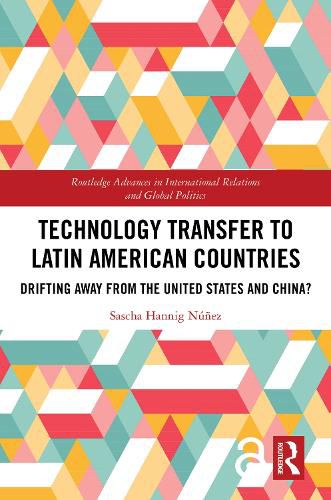Readings Newsletter
Become a Readings Member to make your shopping experience even easier.
Sign in or sign up for free!
You’re not far away from qualifying for FREE standard shipping within Australia
You’ve qualified for FREE standard shipping within Australia
The cart is loading…






Hannig Nunez analyzes the processes behind technology transfers at a state-decision-making level in Latin America. She challenges the conventional notion that the United States and China hold a dominant technological presence over the region, highlighting the increasing influence from both middle powers and regional actors.
This book builds on existing theory and case studies to assess the relevance of economic incentives, geopolitical rivalries, and value-driven considerations in the outcomes of technology transfer in different scenarios. It further explores the notion of a new "Cold War" between China and the United States and examines how these superpowers leverage technology transfers to extend their influence but ultimately fall short due to growing competition from previously overlooked players. In closely examining these dynamics, Hannig Nunez demonstrates how technology transfer is not solely an economic process but a significant geopolitical tool that influences international order, national sovereignty, and regional integration.
An invaluable resource for students, academics, and researchers interested in the intersection between technology, cybersecurity, and international politics.
Chapter 9 of this book is freely available as a downloadable Open Access PDF at http://www.taylorfrancis.com under a Creative Commons Attribution-Non Commercial-No Derivatives (CC-BY-NC-ND) 4.0 license
$9.00 standard shipping within Australia
FREE standard shipping within Australia for orders over $100.00
Express & International shipping calculated at checkout
Hannig Nunez analyzes the processes behind technology transfers at a state-decision-making level in Latin America. She challenges the conventional notion that the United States and China hold a dominant technological presence over the region, highlighting the increasing influence from both middle powers and regional actors.
This book builds on existing theory and case studies to assess the relevance of economic incentives, geopolitical rivalries, and value-driven considerations in the outcomes of technology transfer in different scenarios. It further explores the notion of a new "Cold War" between China and the United States and examines how these superpowers leverage technology transfers to extend their influence but ultimately fall short due to growing competition from previously overlooked players. In closely examining these dynamics, Hannig Nunez demonstrates how technology transfer is not solely an economic process but a significant geopolitical tool that influences international order, national sovereignty, and regional integration.
An invaluable resource for students, academics, and researchers interested in the intersection between technology, cybersecurity, and international politics.
Chapter 9 of this book is freely available as a downloadable Open Access PDF at http://www.taylorfrancis.com under a Creative Commons Attribution-Non Commercial-No Derivatives (CC-BY-NC-ND) 4.0 license